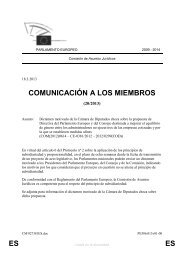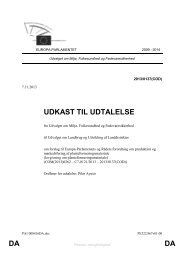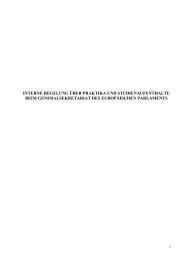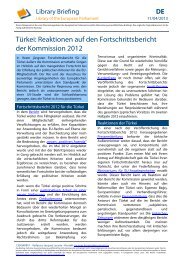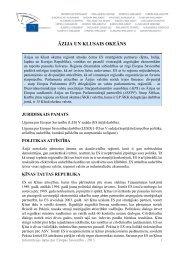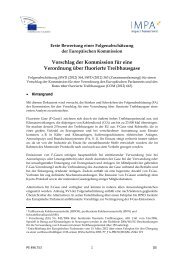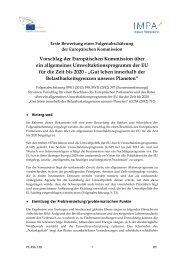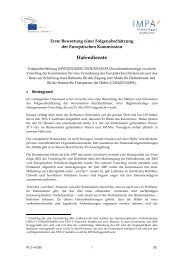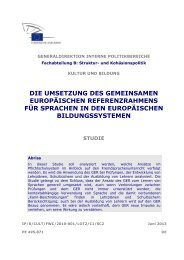Link to the study - European Parliament - Europa
Link to the study - European Parliament - Europa
Link to the study - European Parliament - Europa
Create successful ePaper yourself
Turn your PDF publications into a flip-book with our unique Google optimized e-Paper software.
Nuclear Decommissioning: Management of Costs and Risks<br />
____________________________________________________________________________________________<br />
The cost estimates performed are based on advanced methodology and a thorough project<br />
based approach. Possible improvements that can be made are cost escalations and <strong>the</strong><br />
consideration of risks.<br />
In respect <strong>to</strong> workforce issues Slovakia builds dominantly on experienced workers familiar with<br />
<strong>the</strong> facility. From an early stage on task communication and training was headed <strong>to</strong>wards<br />
decommissioning. Training programs can be expanded and should include management<br />
training.<br />
5.4. OVERALL EVALUATION<br />
In this chapter <strong>the</strong> results of <strong>the</strong> relevant issues are summarized using a qualitative evaluation scale<br />
from 0 ... 5, whereby<br />
0 - means that none of <strong>the</strong> evaluated aspects was correctly identified, taken in<strong>to</strong> account and<br />
implemented in planning and practice ('Nil').<br />
1 - means that <strong>the</strong> evaluated aspects were identified, were only in small parts taken in<strong>to</strong> account<br />
and implemented, fundamental improvements are necessary ('Rudimentary').<br />
2 - means that <strong>the</strong> evaluated aspects were identified, less than half was taken in<strong>to</strong> account and<br />
implemented, large improvements are necessary ('Widely incomplete').<br />
3 - means that <strong>the</strong> evaluated aspects were identified, half of <strong>the</strong>m were taken in<strong>to</strong> account and<br />
implemented and fur<strong>the</strong>r improvements are necessary ('Half way through').<br />
4 - means that all evaluated aspects were identified, were in most cases adequately taken in<strong>to</strong><br />
account and successfully implemented, but fur<strong>the</strong>r improvements are still possible ('Nearly<br />
perfect').<br />
5 - means that all evaluated aspects were identified, were in all cases adequately taken in<strong>to</strong><br />
account and were successfully implemented ('Ideal', 'Perfect').<br />
Even though numbers are used, <strong>the</strong> evaluation results are not quantitative and are not a matter of<br />
calculation but of an overall judgment.<br />
Table 5 shows <strong>the</strong> six aspects, displays in brief <strong>the</strong> aspects that were evaluated and summarizes <strong>the</strong><br />
results for <strong>the</strong> three countries with that scale.<br />
133




